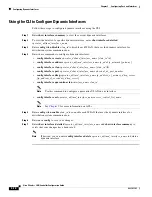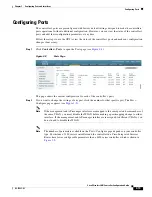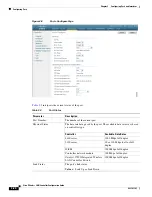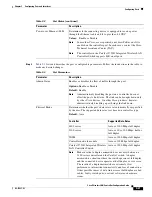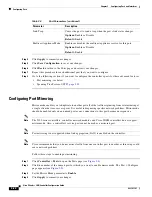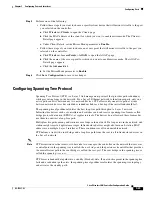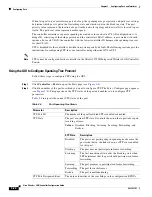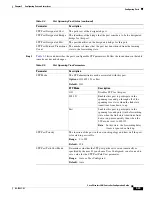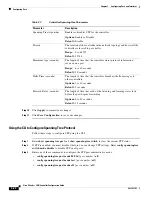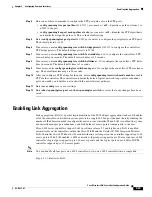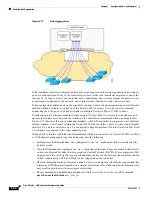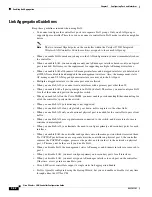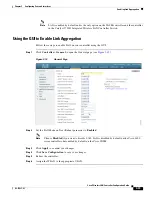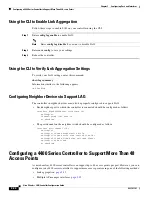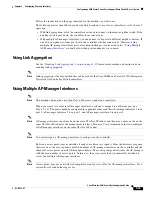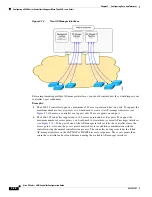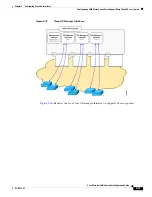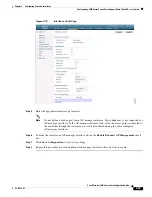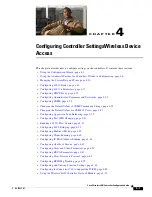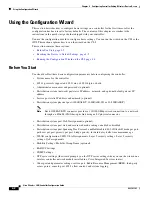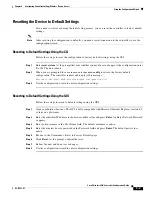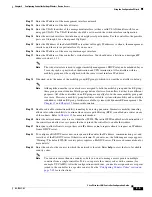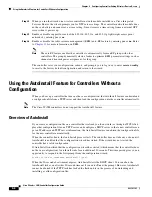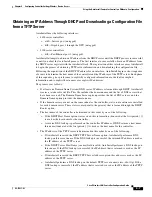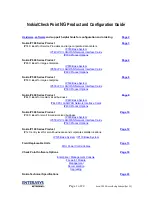
3-32
Cisco Wireless LAN Controller Configuration Guide
OL-17037-01
Chapter 3 Configuring Ports and Interfaces
Enabling Link Aggregation
Link Aggregation Guidelines
Keep these guidelines in mind when using LAG:
•
You cannot configure the controller’s ports into separate LAG groups. Only one LAG group is
supported per controller. Therefore, you can connect a controller in LAG mode to only one neighbor
device.
Note
The two internal Gigabit ports on the controller within the Catalyst 3750G Integrated
Wireless LAN Controller Switch are always assigned to the same LAG group.
•
When you enable LAG or make any changes to the LAG configuration, you must immediately reboot
the controller.
•
When you enable LAG, you can configure only one AP-manager interface because only one logical
port is needed. LAG removes the requirement for supporting multiple AP-manager interfaces.
•
When you enable LAG, all dynamic AP-manager interfaces and untagged interfaces are deleted, and
all WLANs are disabled and mapped to the management interface. Also, the management, static
AP-manager, and VLAN-tagged dynamic interfaces are moved to the LAG port.
•
Multiple untagged interfaces to the same port are not allowed.
•
When you enable LAG, you cannot create interfaces with a primary port other than 29.
•
When you enable LAG, all ports participate in LAG by default. Therefore, you must configure LAG
for all of the connected ports in the neighbor switch.
•
When you enable LAG on the Cisco WiSM, you must enable port-channeling/Ether-channeling for
all of the controller’s ports on the switch.
•
When you enable LAG, port mirroring is not supported.
•
When you enable LAG, if any single link goes down, traffic migrates to the other links.
•
When you enable LAG, only one functional physical port is needed for the controller to pass client
traffic.
•
When you enable LAG, access points remain connected to the switch, and data service for users
continues uninterrupted.
•
When you enable LAG, you eliminate the need to configure primary and secondary ports for each
interface.
•
When you enable LAG, the controller sends packets out on the same port on which it received them.
If a CAPWAP packet from an access point enters the controller on physical port 1, the controller
removes the CAPWAP wrapper, processes the packet, and forwards it to the network on physical
port 1. This may not be the case if you disable LAG.
•
When you disable LAG, the management, static AP-manager, and dynamic interfaces are moved to
port 1.
•
When you disable LAG, you must configure primary and secondary ports for all interfaces.
•
When you disable LAG, you must assign an AP-manager interface to each port on the controller.
Otherwise, access points are unable to join.
•
Cisco 4400 series controllers support a single static link aggregation bundle.
•
LAG is typically configured using the Startup Wizard, but you can enable or disable it at any time
through either the GUI or CLI.

